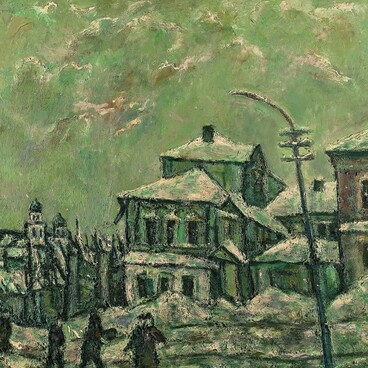Vasiliy
Ivanovich Shevchenko was born in 1926 in the village of Kolybelka, Voronezh
region, into a peasant family. Shevchenko was a participant in the Great
Patriotic War. In January 1945, he was seriously wounded near Königsberg. Due
to the consequences of this injury, the artist was unable to receive a
systematic art education and studied independently. From 1950, Shevchenko lived
in Lipetsk, worked as an interior designer at a ferroalloy plant, in the tram
department. At this time, the Lipetsk school of art began to emerge, which was
represented by Vilen Dvoryanchikov, Anatoly Klimov, Viktor Korolev, Evgeny
Salnikov, Alexander Sorochkin and others. Among them Shevchenko felt like a
legitimate member of the artistic community, developed his own unique style,
combining a child’s view of the world with a mature spiritual experience.
Cart Broke Down
Painting is a dialogue with the viewer. Any color can speak, shout, and sing. My favorite color is scream.
In 1989, the artist had a personal exhibition at the Moscow Gallery of Modern Art. In 1990 Vasiliy Ivanovich was accepted into the International Federation of Artists within UNESCO, a year later — into the Union of Artists of Russia. During his life, Shevchenko created about a thousand paintings, participated in international and all-Russian exhibitions. One of his latest personal exhibitions took place after the artist’s death at the Museum of Naive Art in Moscow. Art historians attribute Shevchenko’s work to such movements as symbolism, expressionism, and naive art, among others. The presented work was included in the collection of the Voronezh Museum in 2011 thanks to the artist’s widow. In total, the museum’s collection contains about 150 works by the artist. The painting “Cart Broke Down” belongs to the late period of his work. Naive paintings, at first glance similar to children’s drawings, are filled with mythological images and symbols.
I don’t paint animals, humans, or buildings. I paint ideas that need to be cherished for a long time so that they become expressive, and then I don’t have to think about the color, it comes naturally.
Ministry of Culture of the Russian Federation

